15 minutes with Sam Anthamatten
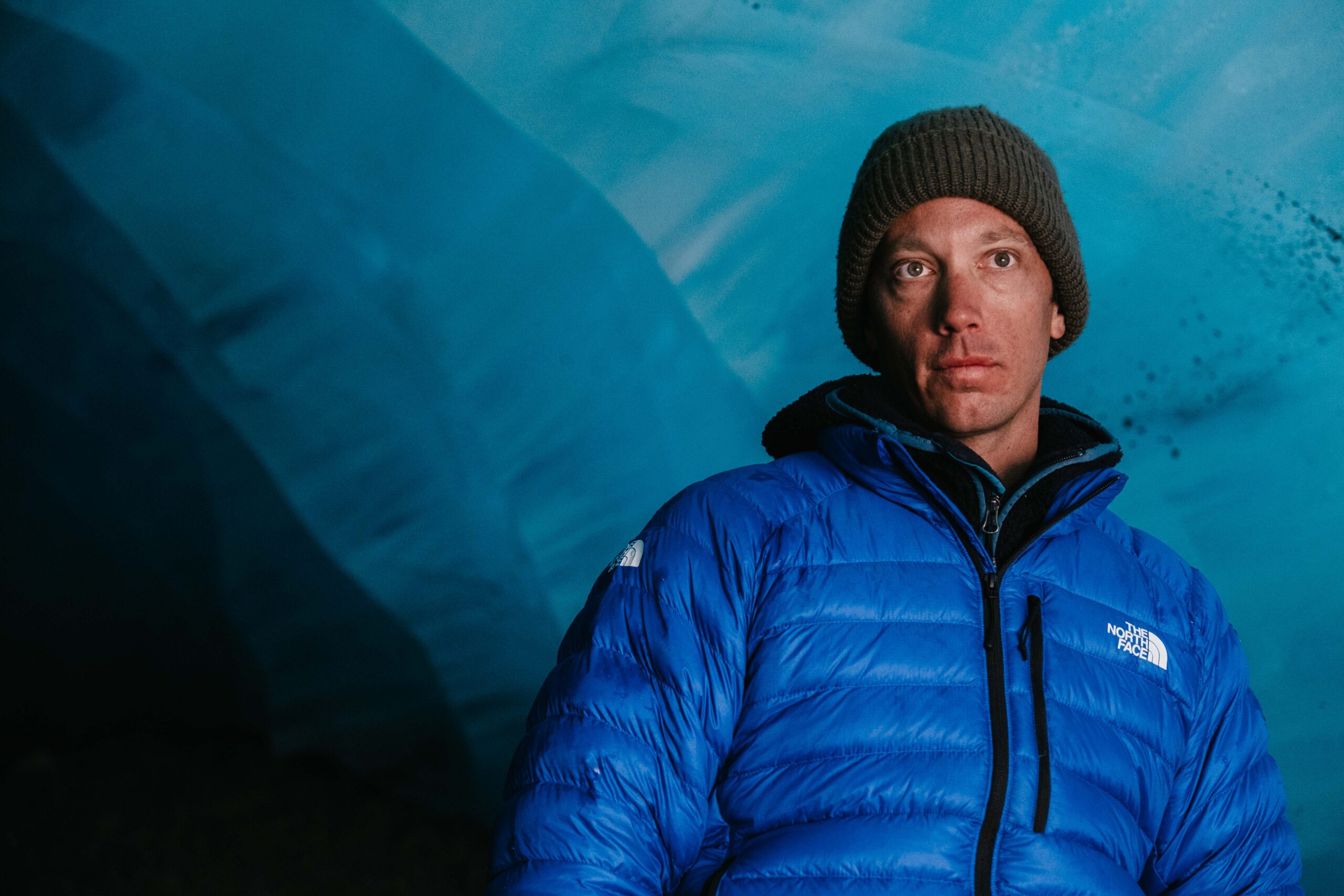

Freeskier, climber and alpinist, Sam Anthamatten has spent much of his career enabling others. From the early days as his brother Simon’s belay partner, to guiding clients in the mountains, and supporting other athletes on big mountain projects. In his new film, Nevia, Sam is finally centre stage. Amy Marwick caught up with him to find out about life at the sharp end on this latest ski, climb, and fly, Alpine adventure.
Amy Marwick Firstly, we loved Nevia. It was great to hear you, Markus Eder, and Jérémie Heitz, opening up about why you do extreme sports – was that always the goal for the film?
Sam Anthamatten It all happened really organically, it’s often the way that the story comes with the project. You go with the flow and see what comes naturally and this was such a last-minute project. Danny Scheissl (from Legs of Steel) just got in touch and said that we should do a film about me. I told him, I wanted to do it differently and show all the different sports that I do. It was really good timing with The North Face as they have just brought the Steep Series snow collection into the Summit Series range. They’ve recognised the fact that people are taking a multidisciplinary approach to moving in the mountains, combining sports (like climbing and skiing) in one adventure.
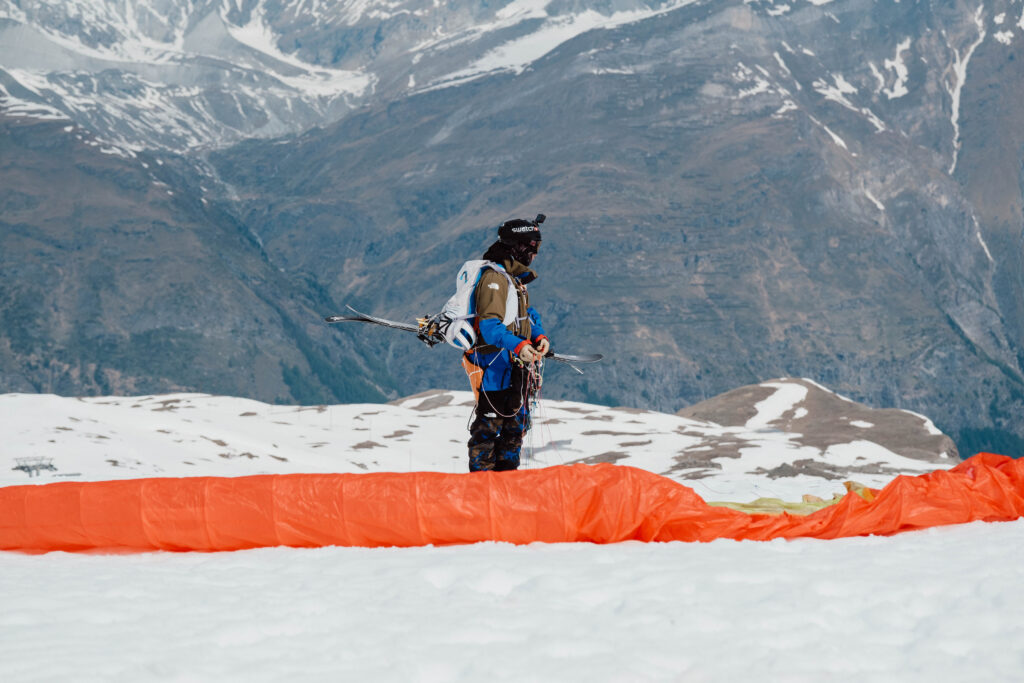
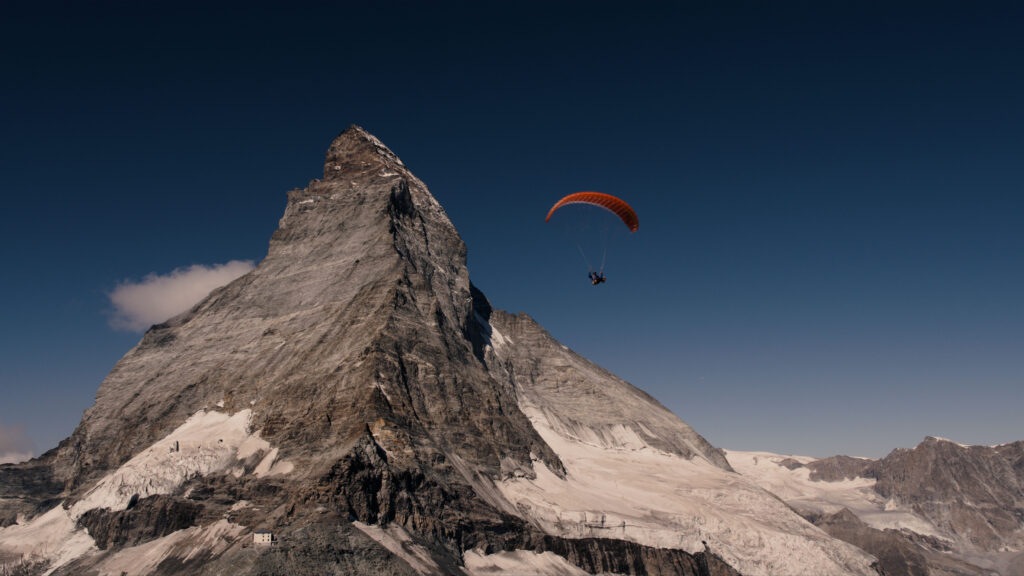
So, flying to the Obergabelhorn (4,063m), climbing and skiing it, all from your home in Zermatt, seemed like the perfect project?
SA The Obergabelhorn has been on my mind since I didn’t get to ride it with Jérémie when we were filming for La Liste. I was sick that day, so I ended up behind the camera instead. I came back from Alaska last year and went up the mountain straight away with my glider and I realised this is like my signature, to combine my favourite sports. The funny thing was, when I came up with the plan that day I thought it would be easy, but in the end the project didn’t work out how I imagined.
AM Was that because the conditions didn’t line up?
SA We had a really dry season but in the end it came down to safety. It was skiable for maybe one day, but it wasn’t in a good way. I only wanted to ski it in the way that Jérémie did in La Liste, showing strong skiing. Not just sliding down and surviving it.
What’s your idea of the perfect mountain day?
SA I have it every second day. I don’t like to commit myself to only skiing or only climbing, you adapt to the daily conditions, play with it and have fun. Later today, I’m going running and if the conditions are good, I’m going to fly down on my glider and land in front of my house.
How much coffee do you drink to have gotten so proficient at so many different mountain sports at just 36 years old?
SA I do like coffee! But I think it’s partly down to easy access to the mountain – I can just go out of my house and run up 1,000 vertical metres daily. I like to move, to be outside, and to really progress in sports. Usually when I start something I want to be really good at it.
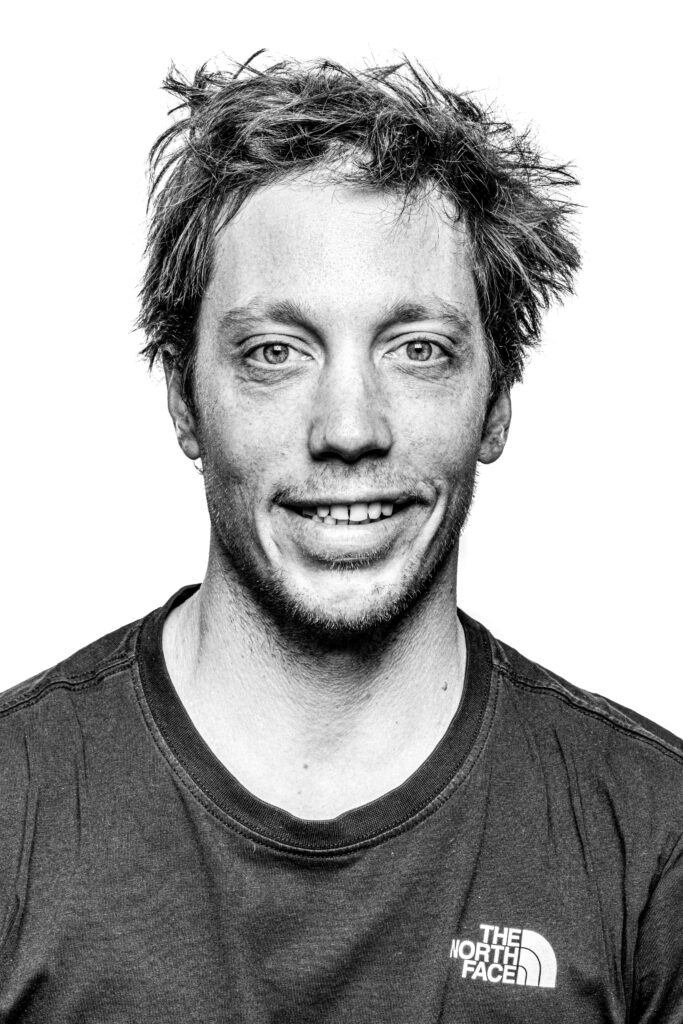
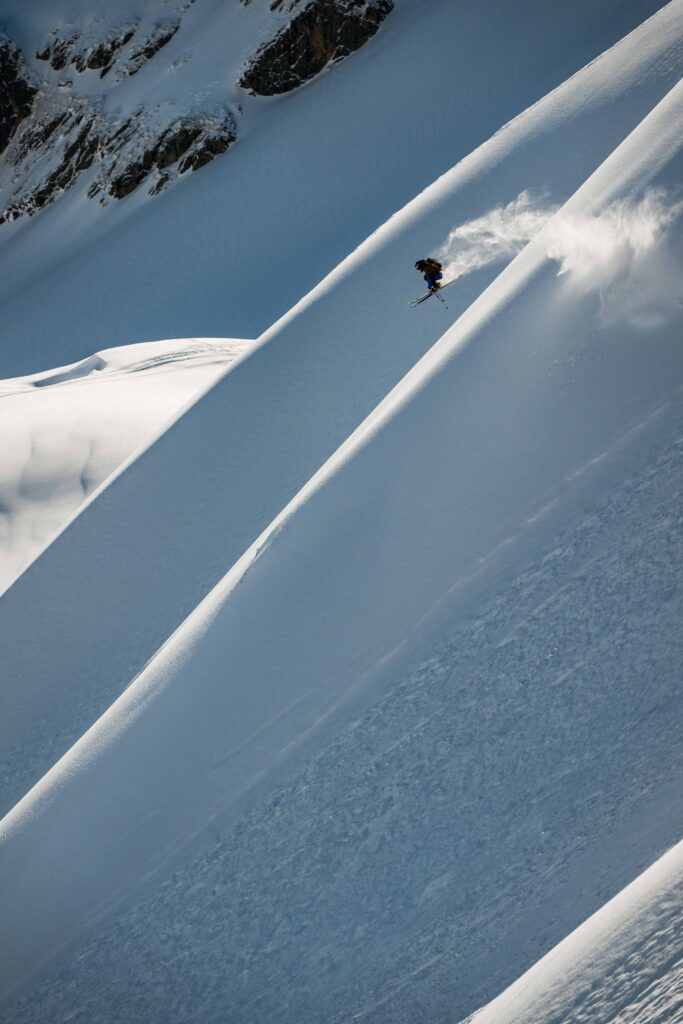
So, do you think you’re a competitive person?
SA I always thought that I’m not a competitive guy, but in the end I’ve done climbing competitions, ice climbing competitions and freeride competitions. They pushed me to the next level. I had a goal to win the Freeride World Tour and that made me train much harder and forced me to be more precise.
Do you have a mentor, or coach, or someone who helps you train?
SA I’ve always had friends who, in a way, became my mentors. My brother, Jérémie, and other The North Face athletes like Victor and Xavier De Le Rue, and Markus, got me to the level I am today. I’m always searching for people who can come with me, who I can learn the most from. My flying progressed thanks to a really good friend. I wanted to soak up his experience and understand how he made decisions, so I was always calling him up to go out.
Who would you like to team up with next?
SA Right now, I’m chatting with The North Face athlete Christina Lusti, from Canada. She is awesome, one of the most well-rounded mountain people. I hope to ski with her this winter and then we will see if we can put a project together.
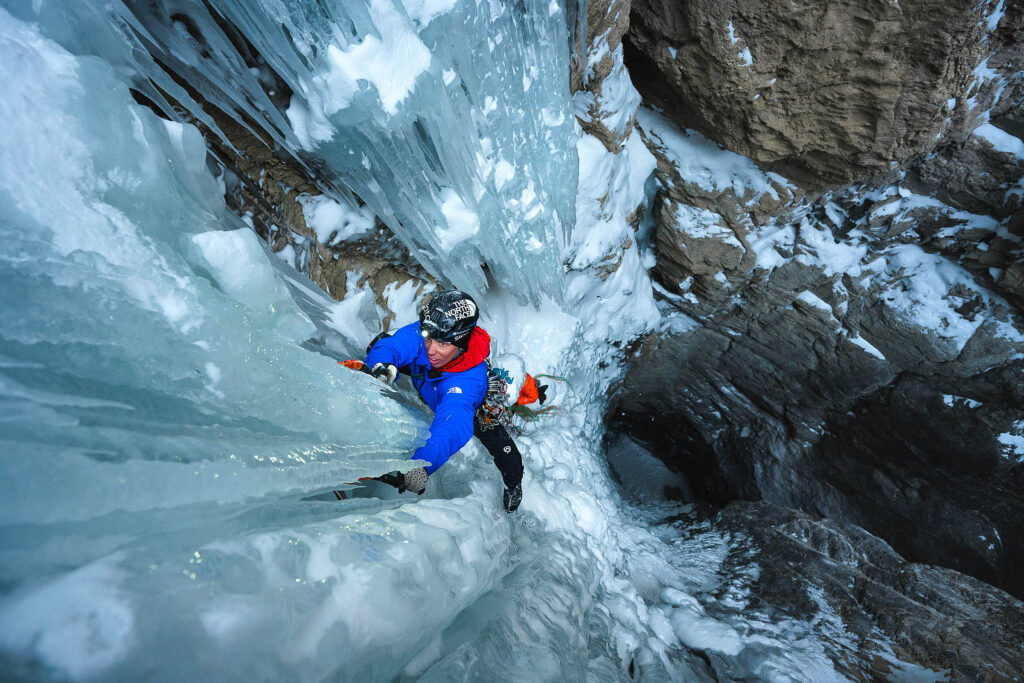
You wrote on your Instagram that, ‘The art of our sports is to make something difficult look easy’. How much is that on your mind when you’re filming?
SA It’s often on my mind because I want to film something that’s aesthetic. If something looks good, it really inspires people. If you do a crazy line that is super exposed, calmly and instinctively, it’s almost art. That’s part of the reason why we do it – in the end we have a beautiful movie, something we can share with other people.
In Nevia you talk about “being born at just the right time,” what do you mean by that?
SA It’s all about the gear we have now – it’s making so many more things possible. When I started ice climbing I was using these heavy plastic boots, but nowadays we can go ice climbing in basically running shoes. The evolution of this gear makes projects that combine disciplines possible. Trying to combine skiing, alpinism and paragliding with the kit from the past would be another level of struggle.
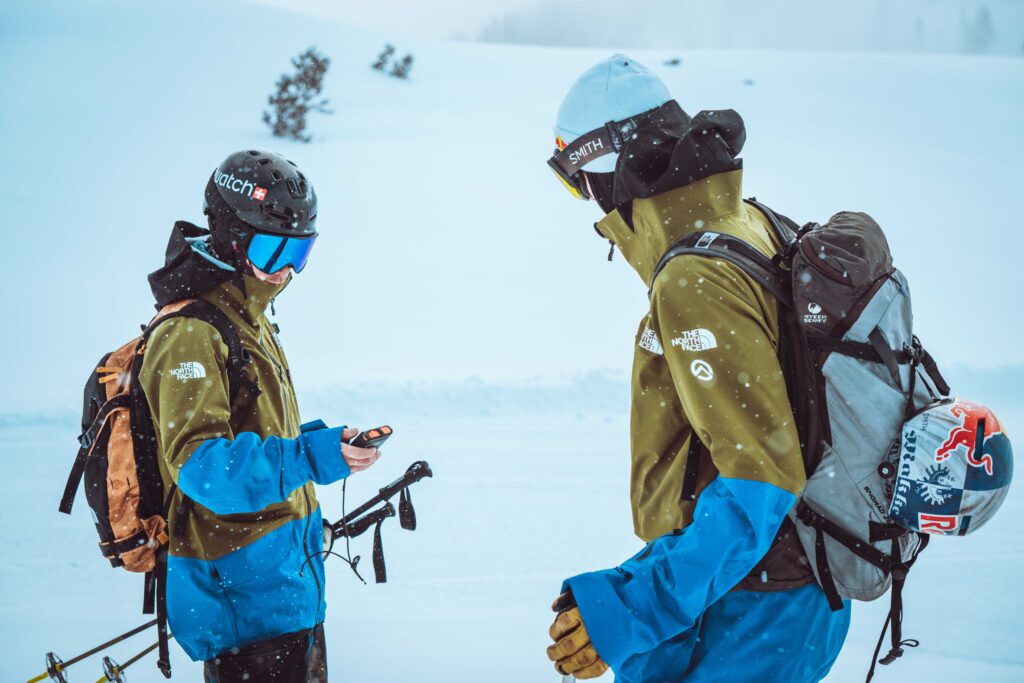
What’s your favourite bit of The North Face kit?
SA I love the new Summit Verbier Futurelight™ jacket because it is exactly what I need. It’s minimalistic but delivers big mountain performance – I don’t like to have a hundred useless zips on my jacket. The North Face is really pushing design boundaries to offer gear with the perfect balance of waterproofness and breathability, with useful features and pockets in the right place.
What’s your go-to ski setup that gives you the flexibility and performance you need?
SA I actually prefer a heavier, more downhill-oriented setup. My go-to ski is the Faction Agent or the new Mana with Look Pivot bindings. I use the CAST system for touring with the interchangeable toe piece. At the summit I know I can step in my bindings, fully focus on skiing, and completely trust my gear. As for boots, when we were filming for La Liste, we were skiing with alpine race boots, but now I’ve changed to the Dynafit Hoji, which is a real a mind opener. I actually used them for the freestyle segment in Nevia too.
When you’re not filming, climbing or skiing for yourself, you are working as a mountain guide. Do you work with regular clients or are you always facilitating big projects?
SA I do both. I have some private clients, but last week I was guiding for a school, and I’m also a ski teacher. I don’t always want to be in high-stake situations. If you’re constantly pushing, you’re exposing yourself to a lot of risk.
Has your relationship with the mountains changed over time?
SA It’s definitely changed with experience. I got more patient. I used to think that every powder day had to be the best one of the season, but actually if the danger is too high; I’m much better at saying no than when I was younger. I’m also in the mountain rescue team here in Zermatt, so I see what can happen when it goes wrong.
So, how do you rationalise the risks of doing extreme sports on a regular basis?
SA It’s a risk management every day, minute by minute. You have to be okay with the risks that you are taking, otherwise you can make the wrong decisions. Keeping fit and training can help you to push further but that doesn’t mean you are taking more risk in my opinion. It means you are doing more but with more precision, avoiding little errors building up to a big mistake.
You talk about finding contentment with what you’ve already achieved rather than always looking for the next project. Do you think you’ll ever be satisfied?
SA I don’t know if I will ever not have this drive to push and go further. Maybe with my daughter here now, the focus will change. Until now, I’ve always been pushing in the same direction with new films and sports, but now it’s a new chapter and I’m really looking forward to it. I’ve often been in the supporting role, now it’s a new supporting role for my daughter and also my wife. I will try to make it as good as possible.
Watch Nevia here: